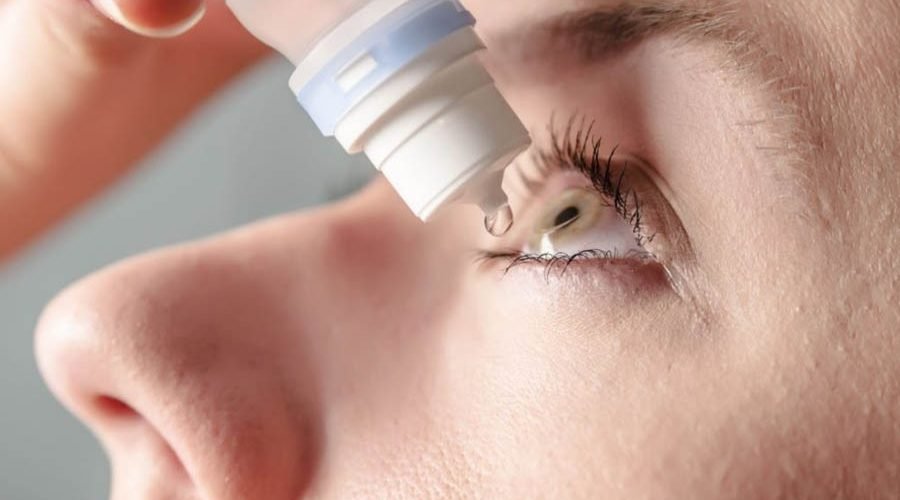Dry eye syndrome is a debilitating condition that can significantly impact your well-being and productivity. If you suffer from dry eyes, you are not alone. Over 16 million Americans have dry eye syndrome diagnoses.
Understanding and treating dry eye syndrome is critical to reducing your risk of secondary complications. In addition to severe discomfort, dry eyes can increase your risk of vision loss and other complications like scarring and corneal ulcers.
The good news is that various effective treatments are available for dry eyes. This post takes an in-depth look at dry eye syndrome, the causes of this condition, and the risk factors.
Table of Contents
What Is Dry Eye Syndrome?
Your eyes’ outer layer consists of lubricating and antibacterial moisture to ensure comfortable eye movements and clear vision. The meibomian glands along your eyelids produce these oily tear layers. However, if these layers don’t contain sufficient moisture, you have dry eye syndrome.
The most common symptom of this condition is a feeling of dryness or grittiness in your eyes and the need to blink or rub your eyes more frequently. Other common symptoms of this condition include:
- Blurry vision
- Itchiness
- Light sensitivity
- Stinging or burning sensations
Patients suffering from dry eye syndrome often feel as if they have sand in their eyes. You may not have any of these symptoms if your dry eye syndrome is mild or at an early stage. However, you may experience discomfort when watching a television or computer screen for long periods.
Causes of Dry Eye Syndrome
The primary cause of dry eye syndrome is the insufficient production of mucus, tears, and sebum by the meibomian glands. Blockages in these glands prevent tear secretion, resulting in feelings of dryness. A gland blockage can consist of dry sebum, old cosmetic product particles, and dead skin cells.
If your meibomian glands produce enough lubrication, but this moisture quickly evaporates, you can also develop dry eye syndrome. In this case, the cause of your dry eye syndrome is likely environmental. For example, if you work in an office where air conditioning consistently blows on your face, you are more likely to suffer from dry eye syndrome.
Are You at Risk of Dry Eye Syndrome?
Generally speaking, people over 50 are at a higher risk of dry eye syndrome. This condition also appears to be more common among females than males.
Some medical treatments and procedures can also increase your risk of dry eye syndrome, including:
- Hormone replacement therapy
- LASIK eye surgery
- Medications, such as nasal decongestants, antidepressants, antihistamines, and birth control pills
However, dry eyes can also be due to an underlying health condition, such as:
- Autoimmune diseases, for example, rheumatoid arthritis and lupus
- Exposure keratitis, causing you to sleep with your eyes halfway open
- Chronic allergies
- Thyroid disease
- Vitamin A deficiency
Lifestyle factors that can increase your risk of dry eye syndrome include:
- Wearing the wrong contact lenses
- Sleeping with contact lenses in your eyes
- Using cosmetic products that affect meibomian gland production
- Insufficient blinking, especially when watching a television or computer screen
- Smoking and type 2 diabetes
- Blue light exposure for several hours at a time
Some of these risk factors are relatively easy to address and can effectively relieve eye dryness. If you suspect you have a medical condition, consult with your doctor.
How To Treat Dry Eye Syndrome
In some cases, treating dry eye syndrome is as easy as wearing your contact lenses responsibly, moving your desk away from air conditioning vents, or using a high-quality makeup remover.
However, if your dry eyes are due to a meibomian gland blockage or health concern, consider the following treatments:
Warm Compress
This treatment involves the application of a hot, wet washcloth to your closed eyes for ten minutes at a time. The heat will dissolve and loosen any gland blockages, restoring tear production. A warm compress will also relax your eyes and increase sebum production to relieve dry eyes.
Medication
Your doctor may prescribe anti-inflammatory cyclosporine to increase tear production by the meibomian glands. Corticosteroid eye drops and cholinergic medication can also restore tear production. Consult with your healthcare provider before taking medication.
Artificial Tears
Artificial tears are eye drops you can insert once or twice daily to lubricate and clean your eyes.
Dry Eye Complications When to Contact a Doctor
Schedule a medical examination if you experience red, swollen, or painful eyes. You should also see a doctor if you experience dry eyes with other symptoms, such as joint pain.





